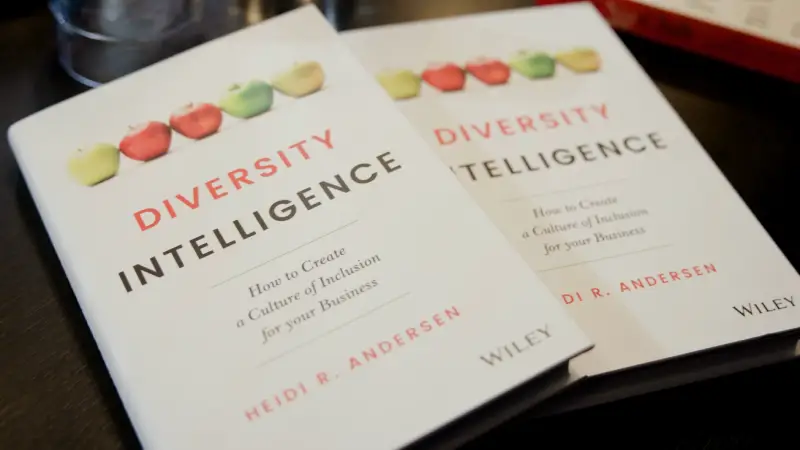Inclusion Survey

Data rather than guesswork
Inclusion Survey – Data-driven diversity and inclusion
A map makes it way easier to find somewhere you’ve never been. That’s what our Inclusion Survey and Perception Gap Analysis are – it’s our map of every pitfall and dead-end between you and a culture of inclusion.
What does a Survey and Gap Analysis do?
It answers some pivotal questions.
Like: Who feels included, who doesn’t, and why?
A survey allows to you see who you’re likely to retain – and who you’re about to lose.
Or: Who feels ‘like a fish in water’ (to use the Danish expression) and who feels like a fish out of it (to use the English one)?
Inclusion is the mortar to diversity’s brick – it’s what allows for diverse teams to flourish and diverse companies to innovate. And before we can do anything to help you with inclusion, we need a clear picture of how much of it you’ve got.
Using an online questionnaire, interviews, and focus groups, we’ll map everything that matters for creating a culture of inclusion, including:
- Current levels of inclusion in your organization, unit or team
- Perceived levels of belonging among different identity groups
- The use of inclusive and exclusionary behaviors
- Employee experience and engagement levels
- Level of loyalty and duration of employment among different identity groups
We use all this data to bust whatever myths you’ve built up about who should be included and why – myths like how women aren’t ambitious (research shows they’re actually more ambitious than men) or how there is no equality gap between men and women (there is, and it’s bigger than you think).
We’ll also check up on you at least once a year, since a culture of inclusion isn’t a level to reach but a living organism, needing as much attention as an orchid.
Admittedly, we have a measurement mindset – we love basing complex matters on data rather than guesswork.
“Through an inclusion survey, you find the gaps and then use your DEI strategy to close them”
– Heidi R. Andersen, Founder of LIVING INSTITUTE
What’s the outcome of a Survey?
We’ll analyze all the data we collect and write up a comprehensive report – with graphs and diagrams and everything – showing how inclusive your organization is perceived to be.
Our clients are often surprised by the results.
One client in the financial sector saw that more than half of new female hires wanted to leave the company in 2 years because of the culture.
A shipping company saw that 92% of their employees wanted the company to do more about diversity and inclusion – even when the company thought they were doing okay in that area.
Clients in every sector found that women are more ambitious than men – and this has been confirmed by tons of research.
“The only way to start this meaningful conversation [on diversity and inclusion] and ensure everyone is talking about the same reality is to take a data-driven approach, using objective and statistically significant facts.
In doing so, everybody is able to participate and we are able to understand how we differ from each other, as well as see things from a different perspective.”
– Heidi R. Andersen, Founder of LIVING INSTITUTE
Why choose Living Institute for your Inclusion Survey?
First, because we’ve done it – a lot. We’ve examined perception gaps at companies for over 18 years.
Next, most inclusion surveys consist of 1–3 questions tacked on at the end of an annual engagement survey. And these questions haven’t been validated (meaning it’s not clear if they actually measure what they’re supposed to).
To get a little nerdy here, our surveys are rigorously built through statistical methods in collaboration with researchers at the Department of Applied Mathematics and Computer Science at DTU. So, you can be sure – within a reasonable degree of scientific certainty – that all the questions are relevant and measure what you want them to. Don’t believe us? Read all about it here.
To get even more nerdy, we also pair these quantitative data with qualitative insights from the focus groups and interviews, doing what we do best: keeping people right at the center.
“There was one story that particularly struck me from the survey we carried out across the organisations in the financial sector:
After we have carried out the quantitative analysis and interviews as part of an inclusion survey, we also conducted focus groups. These are always held with members of top management after the survey has been completed and are an opportunity to present our findings and ask what surprises them about the results. When we were holding a focus group with one of the companies in the financial sector, the CEO arrived 10 minutes late and, as he entered the room, stated, “Now we’re going to hear how sexist we all are.”
When we reached the figures…about how 60% of female managers believed there was enough female leadership talent already in the organisation, compared to just 20% of male leaders, this CEO became rather upset. His response to this data was, “How come women can see this talent and I can’t?”
It was a wake-up call for him, because the data was indisputable and showed why so many women had left the company.”
– Heidi R. Andersen, Founder of LIVING INSTITUTE
Other Solutions
To thrive in any intercultural context, one needs a certain degree of mental flexibility – what we call cultural intelligence.

Cultural Intelligence
Cultural Intelligence (CQ) separates benefiting from cultural diversity instead of failing because of it. That’s also why you need CQ when interacting with people from other cultures?
Events & Free Webinars
Upcoming
MicroBite Learning: The dos and don’ts of accelerating gender balance30 min.
MicroBite Learning: Boost Your Cultural Intelligence in 30 Minutes30 min.
Book

Diversity Intelligence: How to Create a Culture of Inclusion for your Business
Heidi R. Andersen, founder of Living Institute, has stuffed over 18 years worth of experience into a practical handbook on making inclusion an essential aspect of your company culture.
The book is on the recommended read list of 238 accredited business schools and universities – including Insead, Oxford University, London Business School, Said Business School etc.
